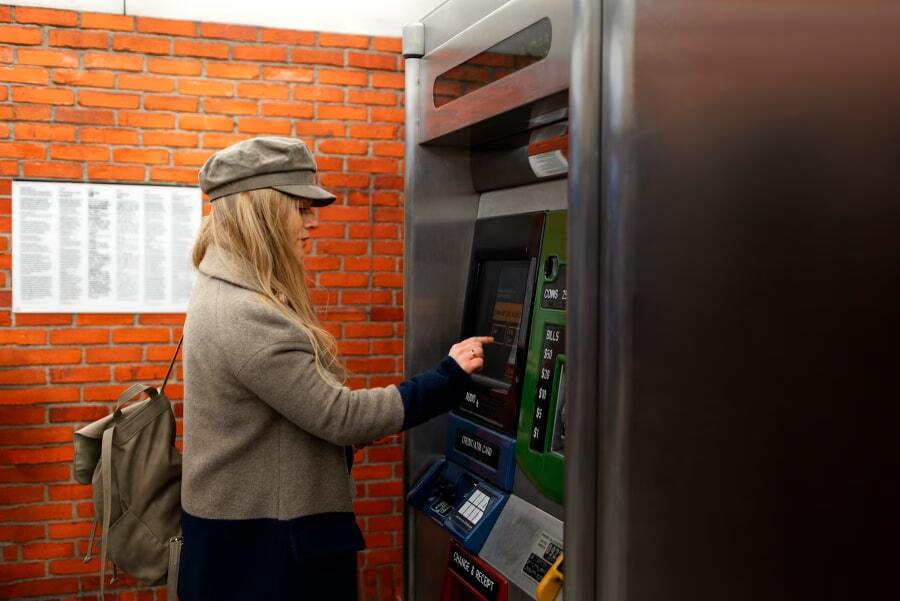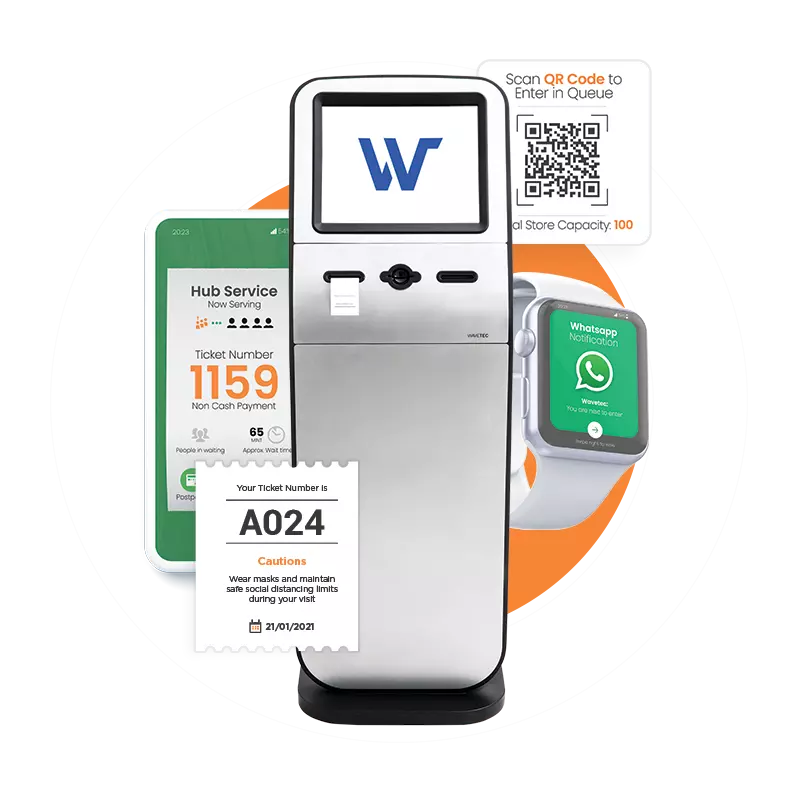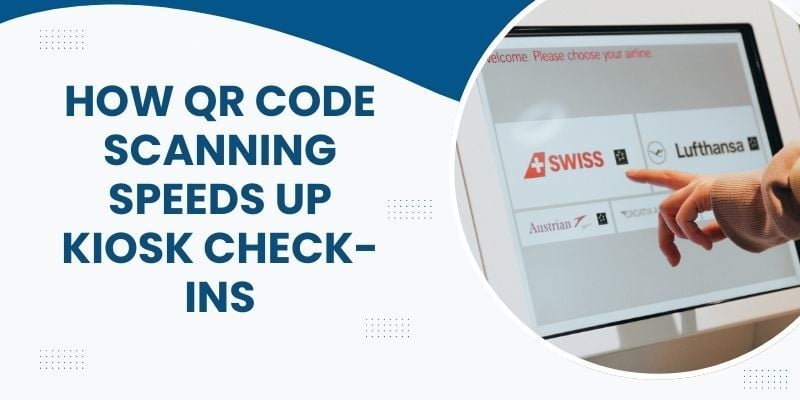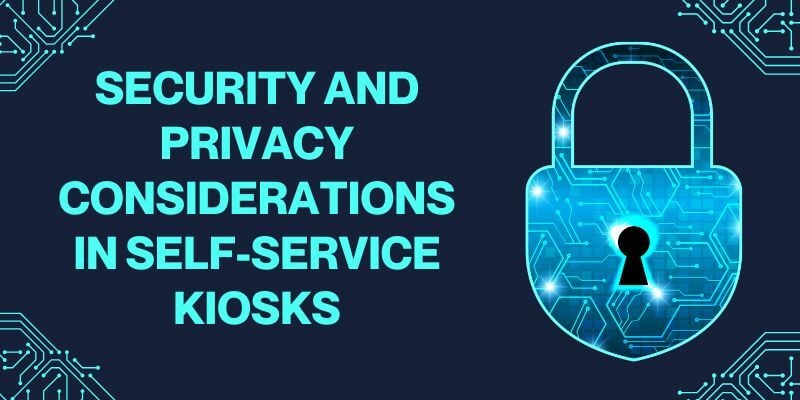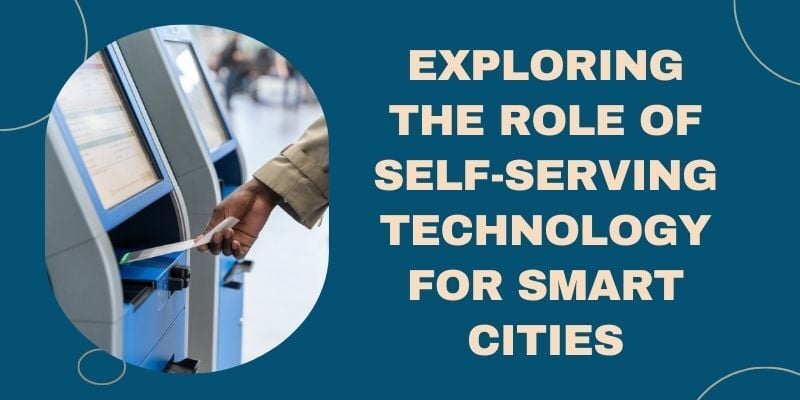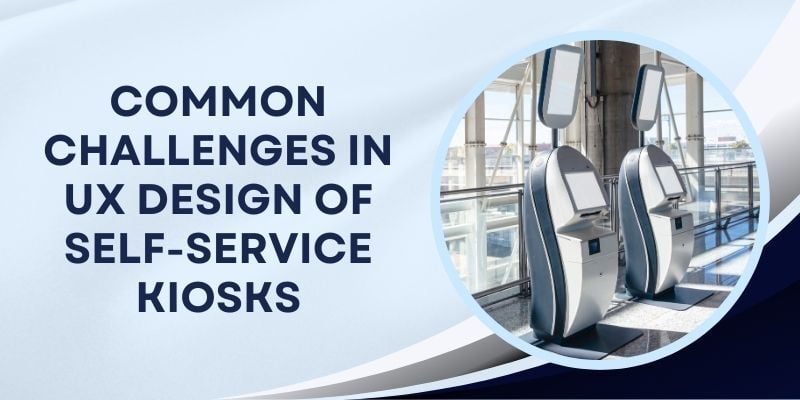Self-service technology is based on automated systems that allow customers to perform tasks independently without needing assistance from staff members. Major contributors to the self-service industry include self-service kiosks, interactive websites, and mobile apps.
Have you visited a superstore with extensive queues for checkout? Haven’t you wished to engage in a self-checkout process?
Self-service technology caters to this and empowers customers by giving them convenience and greater control of their experience. It expedites a customer’s request and helps them omit lines, adding to positive reviews for the store.
Self-service kiosks are vital to multiple industries. Here’s how they are beneficial to each sector:
- Retail: it gives customers more time to browse and purchase products without worrying about queuing.
- Banking: self-service ATMs offer quick cash withdrawals and balance inquiries without waiting in long queues.
- Hotels and hospitality: self-check-in kiosks streamline the check-in process for hotel guests.
This blog explores the benefits of self-service kiosk technology and how you can apply it to your company.
Let’s learn about the benefits of customer self-service kiosks.
Statistics and Data
-
- According to Statista, the self-service kiosk market was valued at 12.05 billion USD in 2020 and is projected to reach 21.42 billion USD by 2027, almost doubling in value.
- In another survey conducted in June 2022, over 60% of grocery retailers in the United States and the United Kingdom believed their customers would switch merchants if they did not offer them self-service kiosks.
7 Advantages of Self-Service Kiosks for Customer Satisfaction
Self-service kiosks can help you improve customer satisfaction by reducing wait times, increasing convenience, and providing a more personalized experience.
Here are some of the specific benefits of self-service kiosks for customer satisfaction:
- Convenience and time-saving benefits of self-service technology
- Reduction in labor costs through self-service technology
- Empowerment and autonomy for customers
- Capturing valuable customer data through self-service technology
- Reduction of human error and increased accuracy
- Empowering customers to take control of their transactions
- Reduction of paper waste through digital self-service solutions
1. Improved Customer Experience
1. Convenience and time-saving benefits of self-service technology
According to a survey by McKinsey, 75% of customers prefer self-service options to save time. Self-service technology provides convenience and time-saving benefits to customers.
You see this most commonly in retail stores with self-checkout systems and in restaurants that enable customers to customize their orders and make payments without relying on waitstaff.
2. Enhanced control and personalized experience for customers
Self-service technology empowers customers by giving them control over their interactions. In the hospitality industry, guests can use self-check-in kiosks to choose their preferred rooms and select additional amenities.
In healthcare, self-service registration systems allow patients to input their information and preferences, ensuring a personalized experience and reducing the need for repetitive paperwork.
3. Reduction of waiting time and improved service efficiency
One of the significant advantages of self-service technology is the reduced waiting time for customers. For instance, self-service ATMs in banking enable quick cash withdrawals and balance inquiries, eliminating the need to wait in line for a teller.
2. Cost Savings for Businesses
1. Reduction in labor costs through self-service technology
Research conducted by Forrester found that self-service technology can lead to a 30% reduction in labor costs. How do self-service kiosks offer cost-saving benefits?
This technology reduces the need to hire additional staff to carry out repetitive tasks, thus reducing labor costs for businesses. By automating tasks previously handled by employees, businesses can allocate their workforce to more value-added activities.
2. Streamlining business operations and improving productivity
Self-service technology helps streamline business operations by making processes more efficient and reducing bottlenecks. This is most apparent when ordering online. Customers can place orders directly, eliminating the need for manual order-taking.
This is faster as staff members can focus on food preparation and customer satisfaction.
3. Cost-effective solution for businesses of all sizes
Self-service technology offers a cost-effective solution for businesses of all sizes. Small businesses can benefit from self-service kiosks or websites, which provide customers with information and allow them to make purchases independently, reducing the need for dedicated sales staff.
Larger organizations can leverage self-service technology to handle a high volume of transactions efficiently, reducing operational costs in the long run.
3. Increased Customer Satisfaction
1. Empowerment and autonomy for customers
Customers have widely appreciated self-service technology for giving them more control over their business interactions. Customers can independently navigate various tasks, such as placing orders, making payments, or accessing information.
This autonomy enhances the overall customer experience as individuals can customize their interactions according to their preferences.
For example, kiosks at airports enable passengers to choose their seats, print boarding passes, and manage their itineraries without depending on staff assistance.
2. Quick and seamless transactions leading to customer satisfaction
Self-service technology streamlines transactions, making them faster and more efficient. Self-checkout systems are equipped with card readers and scan and pay options, saving time and reducing frustration.
3. Availability of self-service options at any time and from anywhere
One of the significant advantages of self-service technology is its accessibility and availability 24/7. This is the chance to make kiosks function from anywhere with an internet connection.
This convenience enables customers to engage with businesses without being constrained by operating hours or physical locations.
Customers manage their accounts, track usage, and request services anytime, reducing the need for contacting customer support.
4. Enhanced Data Collection and Analysis
1. Capturing valuable customer data through self-service technology
According to Gartner, by 2023, more than 75% of organizations will use customer identity and access management (CIAM) to collect data from self-service interactions. This is where self-service technology comes into play, with an opportunity to collect valuable data.
When customers use self-checkout systems in retail stores, CIAM picks up customer preferences, behaviors, and demographics.
These patterns can be tracked, providing insights into popular products, buying habits, and seasonal trends. This data helps businesses understand their customers better and tailor their offerings to meet their needs.
2. Leveraging data insights for personalized marketing and customer segmentation
The data collected through self-service technology enables businesses to create personalized marketing campaigns and target specific customer segments.
An e-commerce website can use the data to recommend products based on a customer’s browsing and purchase history.
Personalized marketing messages and offers can be sent via email or mobile apps, increasing the chances of conversion and customer loyalty.
3. Improved decision-making through data-driven analytics
Data-driven analytics derived from self-service technology help businesses to make informed decisions. With trends and forecast demands, companies can optimize operations for customers.
A retail chain uses self-service checkout data to determine peak shopping hours and allocate staff accordingly. This also helps in inventory management, pricing strategies, and resource allocation.
5. Improved Service Delivery and Efficiency
1. Reduction of human error and increased accuracy
Self-service technology minimizes the risk of human error in service processes. Automated ordering systems eliminate the possibility of miscommunication between customers and waitstaff, ensuring accurate and error-free orders.
Similarly, self-checkout systems in retail stores accurately scan and price items, reducing pricing mistakes.
2. Quick and automated service processes
Self-service technology enables faster and more efficient service delivery. Airports allow travelers to check in and print boarding passes swiftly, bypassing long queues at the counter.
This automation speeds up the process, reducing waiting times and improving overall customer satisfaction.
3. Round-the-clock availability and scalability of self-service technology
Self-service solutions offer 24/7 availability, allowing customers to access services conveniently. Online banking platforms and mobile apps enable customers to transact and access account information anytime.
Furthermore, self-service technology can easily scale to accommodate a high volume of users without requiring additional staff, ensuring efficient service even during peak periods.
It remains important to be operational even outside of regular hours.
6. Empowerment and Independence for Customers
1. Empowering customers to take control of their transactions
Self-service technology empowers customers to take control of their transactions. These systems are well-equipped with a point-of-sale system.
Online banking platforms allow users to manage their accounts, transfer funds, and pay bills from the comfort of their homes. This level of independence fosters a sense of empowerment and convenience.
2. Customization and personalization options
Self-ordering kiosks enable customers to customize their orders and requests, showcasing the benefits of self-ordering kiosks in enhancing the overall customer experience.
For example, customers can choose toppings and dietary preferences in restaurants or add special requests. This flexibility enhances customer satisfaction by tailoring products or services to individual needs.
3. Access to information and self-help resources
Customers have access to self-help resources in the form of interactive touchscreens. This lets individuals access detailed information, maps about stores and exhibits, watch videos, or listen to audio guides.
This empowers visitors to explore at their own pace and delve deeper into areas of personal interest.
7. Sustainability and Environmental Impact
1. Reduction of paper waste through digital self-service solutions
Self-service technology contributes to reducing paper waste by issuing e-tickets and electronic receipts. This eliminates the need for printed versions, minimizing environmental impact.
Getting digital forms and documents filled out by customers is easier and can be directly submitted online.
2. Lower energy consumption compared to traditional service methods
Compared to traditional service methods, self-service technology typically requires lower energy consumption. Digital signage or display screens used in self-service kiosks consume less energy than traditional printed advertisements or static displays.
Self-service kiosks qualify for energy efficiency, align with sustainable practices, and help organizations reduce their carbon footprint.
3. Alignment with eco-friendly practices and corporate social responsibility
Many industries are adopting self-service options as part of their commitment to sustainable operations and corporate social responsibility.
With the reduced need for physical resources, such as paper or plastic, and optimized energy usage, companies can demonstrate their dedication to improving the environment.
Case Studies and Success Stories
Wavetec facilitates Emirates in Managing their customer flow

Emirates partnered with Wavetec to introduce an efficient queue management system based on self-service technology called the Wavetec Smart Kiosk. This functioned as a ticket dispenser for customers.
Additionally, the customer queue management system was integrated with digital signage boards. These not only displayed ticket numbers but could alternatively be used for displaying entertainment material. This was equipped with central software that regulated customer data and analytics.
Djezzy Telecom partners to manage customer
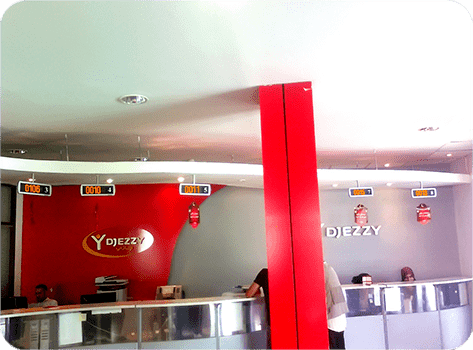
Wavetec provided Djezzy Telecom with an end-to-end solution with an electronic queue management system and customized central reporting software. Djezzy installed smart LCD touch-screen kiosks that identify and prioritize customers.
Wavetec also provided software to display ticketing information, promotional messages, and advertisements on LCD screens. A central reporting software was implemented to track branch progress, and a live manager dashboard offered real-time data on staff and counters.
Djezzy was able to extend exemplary customer service by extending self-service opportunities.
FAQs related to Self Service Technology
How do self-service kiosks empower customers?
Self-service kiosks empower customers by giving them control over their transactions, allowing them to browse, customize, and complete tasks independently of human employees.
Can self-service kiosk technology collect and leverage customer data?
Yes, self-service kiosk technology can collect and leverage customer data with their consent. This data can personalize offerings, improve customer experiences, and make data-driven business decisions while maintaining privacy and security.
What does the future hold for self-service kiosk technology?
The future of self-service kiosk technology is promising. Advancements include enhanced AI capabilities, facial recognition for personalized experiences, and integration with mobile devices.
Final Words
Are you ready to revolutionize your company with self-service technology?
The benefits of self-service kiosks in reducing wait times, improving workload and customer flow, and energy resources determine the next big step to installing kiosks.
Become a part of the industry that promotes convenience for customers.
Contact us to learn more about self-service kiosks!
BOOK A FREE DEMO
